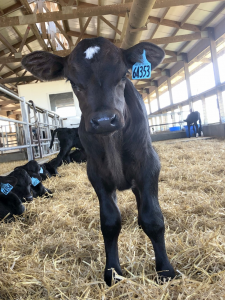
Dairy farmers have improved animal husbandry, herd health, and reproductive management in such a positive way, we now have one of the largest national dairy heifer inventories in history. As profit margins get slimmer in the dairy business, as well as the excess number of heifers raised on farms, many farmers are starting to use semen from beef sires as part of the operation’s breeding program.
It costs over $2,000 to raise a dairy heifer from birth to calving, while it only costs $971 to purchase a heifer before she calves (USDA Market Report, October 2021). At $2,000 to raise a dairy heifer on the farm, raising too many heifers is an added, unnecessary expense to the farm. Excess heifers typically have been sold for dairy genetics, but farms are not recouping the cost to raise their animals due to low market prices. To help mitigate the costs to raise the dairy replacement herd, as well as capture additional income from another enterprise on the farm which adds value to dairy bull calves, farmers will breed low-end genetic cows and heifers to beef for a dairy beef animal. These dairy beef animals are more efficient in raising for the meat industry, adding value to those animals already being sold for beef.
Dairy x beef calves need to be managed and cared for just as their dairy heifer counterparts. To help understand where the dairy industry is, and how they make decisions regarding the dairy x beef herd, Extension is conducting a Dairy X Beef Calf Management Survey. Extension Dairy & Livestock Agent Tina Kohlman is collecting data on Fond du Lac County dairy farms who currently utilize beef semen on the farm. Local data will be shared with other data from across the state to help provide direction in research and outreach related to this enterprise.
For more information regarding raising dairy x beef animals, please visit https://livestock.extension.wisc.edu/article-program/beef-x-dairy/.
The dairy perspective
The increase in availability and use of dairy sexed semen has made it easier for dairies to produce heifers and meet their needs for cull cow replacement.




